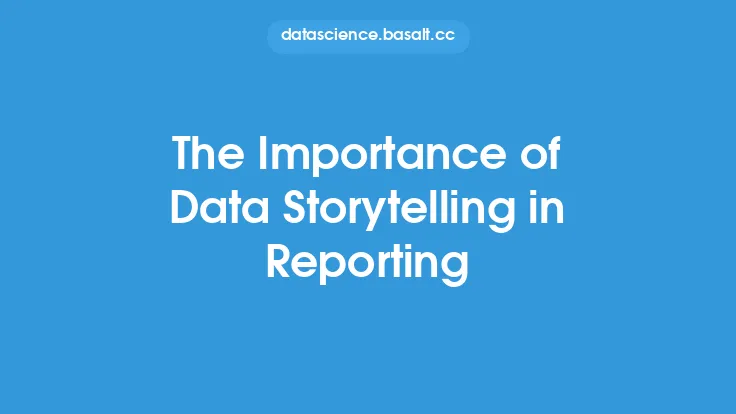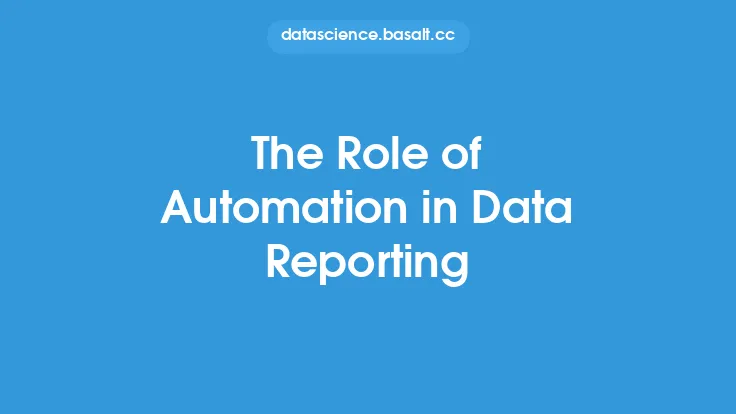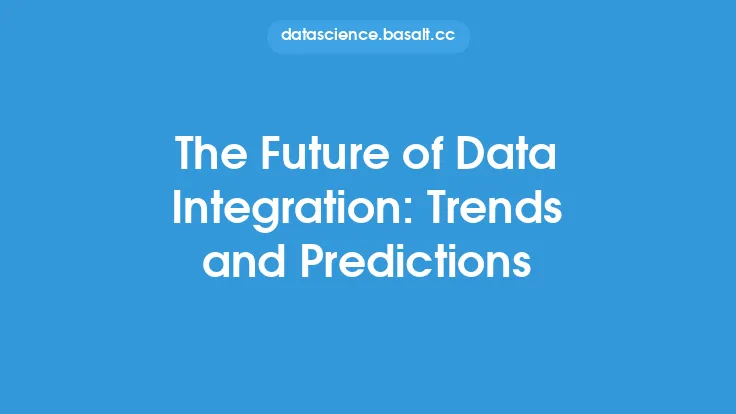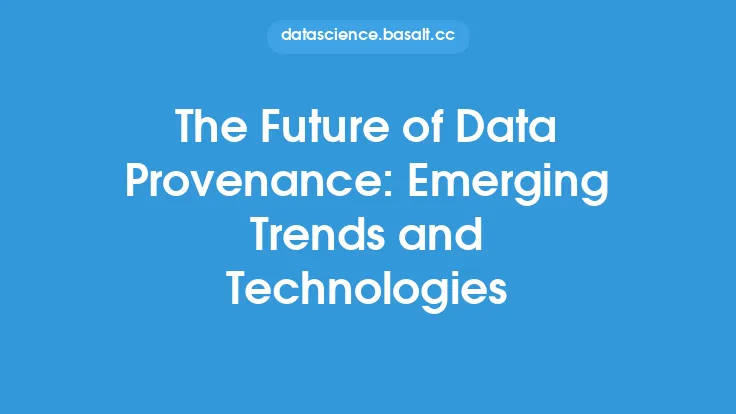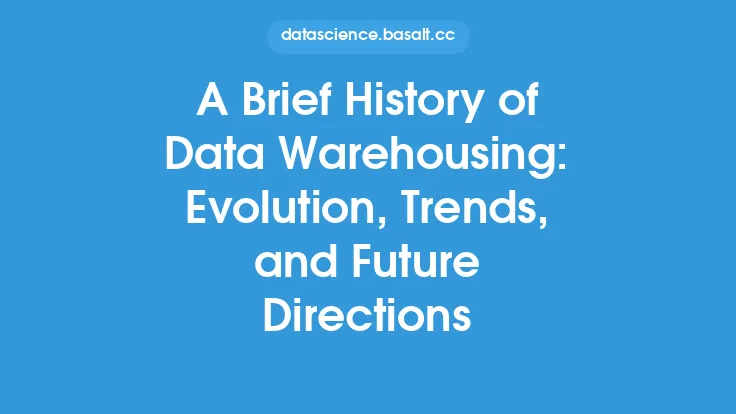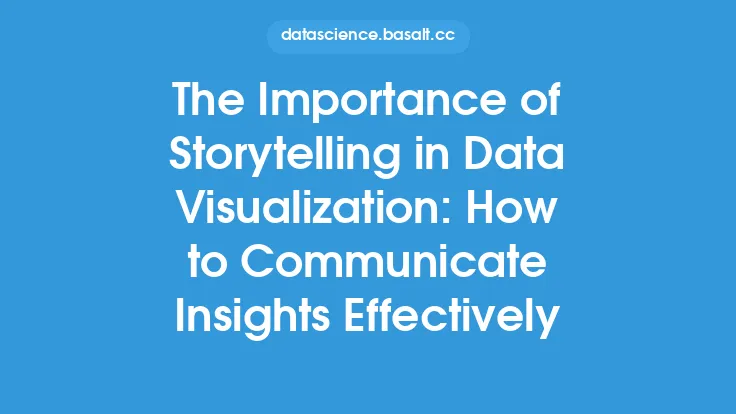The world of data reporting is constantly evolving, driven by advances in technology, changing user needs, and the increasing importance of data-driven decision-making. As we look to the future, several trends are emerging that will shape the way we collect, analyze, and present data. These trends will have a significant impact on the field of data analysis, enabling organizations to make better-informed decisions, improve operational efficiency, and drive business growth.
Introduction to Emerging Trends
One of the key trends in data reporting is the growing use of artificial intelligence (AI) and machine learning (ML) algorithms to analyze and interpret complex data sets. These technologies enable organizations to identify patterns, predict outcomes, and make recommendations based on data-driven insights. AI-powered data reporting tools can also automate many of the manual tasks associated with data analysis, such as data cleaning, processing, and visualization, freeing up analysts to focus on higher-level tasks.
Cloud-Based Data Reporting
Another significant trend in data reporting is the shift towards cloud-based solutions. Cloud-based data reporting platforms offer a range of benefits, including scalability, flexibility, and cost savings. These platforms enable organizations to store, process, and analyze large volumes of data in a secure and reliable manner, without the need for expensive hardware or software investments. Cloud-based data reporting also enables real-time collaboration and sharing of data insights, making it easier for teams to work together and make data-driven decisions.
Real-Time Data Reporting
Real-time data reporting is another trend that is gaining traction. With the increasing use of IoT devices, social media, and other digital technologies, organizations are generating vast amounts of data in real-time. Real-time data reporting enables organizations to analyze and respond to this data as it is generated, enabling them to make faster and more informed decisions. Real-time data reporting also enables organizations to identify and respond to emerging trends and patterns, staying ahead of the competition and driving business growth.
Data Visualization and Storytelling
Data visualization and storytelling are critical components of effective data reporting. As the volume and complexity of data continue to grow, it is becoming increasingly important to present data insights in a clear and concise manner. Data visualization tools, such as charts, graphs, and heat maps, enable organizations to communicate complex data insights in a simple and intuitive way. Data storytelling, which involves using narrative techniques to convey data insights, is also becoming increasingly popular. By using data visualization and storytelling techniques, organizations can make data insights more accessible and engaging, enabling non-technical stakeholders to understand and act on data-driven recommendations.
Big Data and Data Lakes
The increasing use of big data and data lakes is another trend that is shaping the future of data reporting. Big data refers to the large volumes of structured and unstructured data that organizations generate and collect. Data lakes, which are centralized repositories that store raw, unprocessed data, enable organizations to store and analyze big data in a scalable and flexible manner. Big data and data lakes enable organizations to analyze and gain insights from a wide range of data sources, including social media, IoT devices, and customer feedback. By leveraging big data and data lakes, organizations can gain a more complete and nuanced understanding of their customers, operations, and markets.
Data Governance and Security
As the importance of data reporting continues to grow, so too does the need for effective data governance and security. Data governance refers to the policies, procedures, and standards that organizations use to manage and protect their data. Data security, which involves protecting data from unauthorized access, theft, or damage, is also critical. Effective data governance and security enable organizations to ensure the quality, integrity, and confidentiality of their data, protecting against data breaches and other security threats. By implementing robust data governance and security measures, organizations can build trust with their stakeholders, protect their reputation, and comply with regulatory requirements.
The Role of Blockchain in Data Reporting
Blockchain technology is also emerging as a key trend in data reporting. Blockchain, which is a distributed ledger technology, enables organizations to create secure, transparent, and tamper-proof records of data transactions. Blockchain can be used to verify the authenticity and integrity of data, enabling organizations to build trust with their stakeholders and protect against data tampering. Blockchain can also be used to create secure and decentralized data sharing networks, enabling organizations to share data in a secure and controlled manner.
The Future of Data Reporting
As we look to the future, it is clear that data reporting will continue to play a critical role in driving business success. The trends outlined above, including the use of AI and ML, cloud-based data reporting, real-time data reporting, data visualization and storytelling, big data and data lakes, data governance and security, and blockchain, will all contribute to the evolution of data reporting. By leveraging these trends, organizations can gain a competitive edge, drive business growth, and make better-informed decisions. As the field of data analysis continues to evolve, it is likely that new trends and technologies will emerge, further transforming the way we collect, analyze, and present data.
